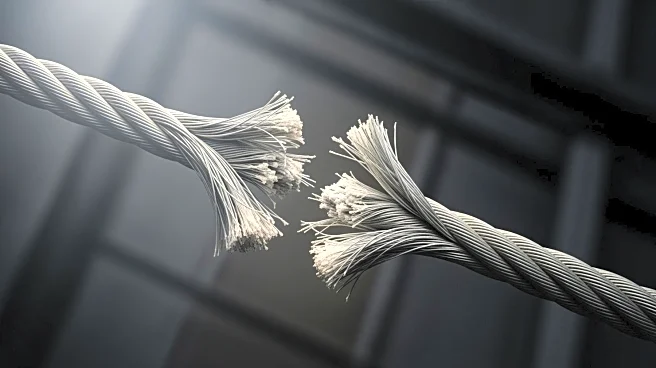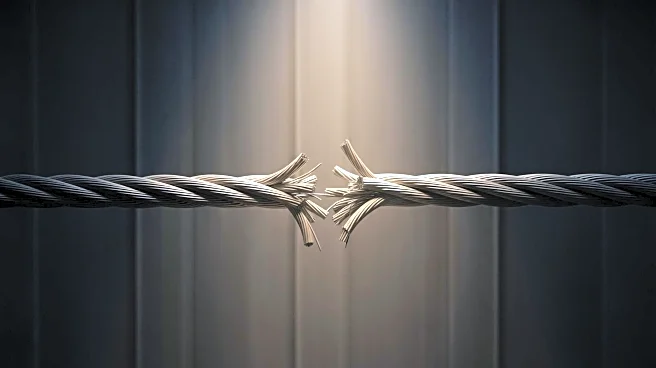What's Happening?
A preliminary investigation into the deadly funicular crash in Lisbon, Portugal, has revealed that the cable involved was not certified to carry passengers and did not meet the operator's specifications. The crash, which occurred in September, resulted
in the deaths of at least 16 people and injured several others. The incident took place when a steel cable connecting the Glória funicular's two cars snapped shortly after the cars began their journey along Calçada da Glória. Eyewitnesses reported seeing one of the cars derail and crash into a building. The Office for the Prevention and Investigation of Accidents in Civil Aviation and Rail (GPIAAF) identified serious failures in the cable, maintenance, and brakes. The interim report also noted that maintenance tasks were often marked as completed despite not being performed, and the maintenance plan was recorded as compliant by the operator, CARRIS.
Why It's Important?
The findings of the investigation highlight significant safety and regulatory concerns within the operation of public transportation systems. The failure to adhere to safety specifications and proper maintenance protocols poses a risk not only to passengers but also to the integrity of public transport infrastructure. This incident underscores the need for stringent oversight and compliance with safety standards to prevent similar tragedies. The broader implications could lead to increased regulatory scrutiny and potential reforms in transportation safety standards, affecting operators and passengers alike.
What's Next?
The GPIAAF has announced that a final report on the crash will be released next year. This report is expected to provide a comprehensive analysis of the causes and recommend measures to prevent future incidents. In the meantime, there may be increased pressure on CARRIS and other operators to review and enhance their safety and maintenance protocols. Stakeholders, including government agencies and public transport users, will likely be closely monitoring the situation to ensure accountability and the implementation of necessary safety improvements.













